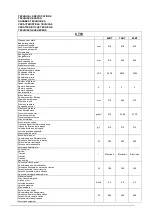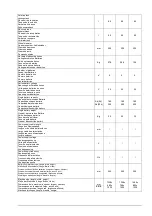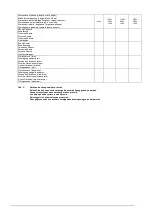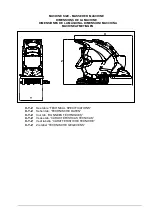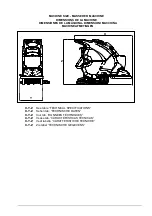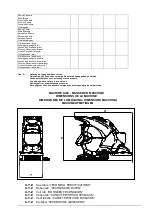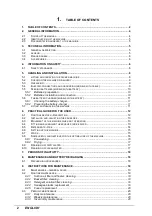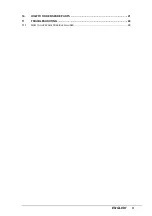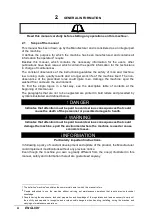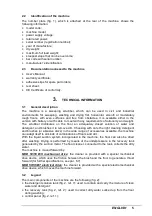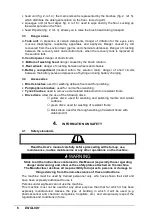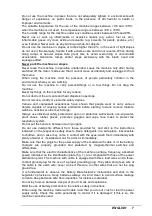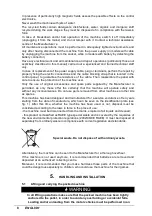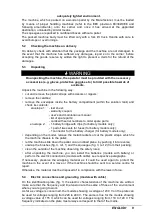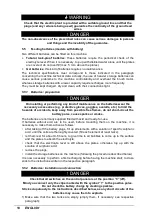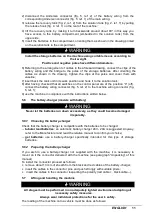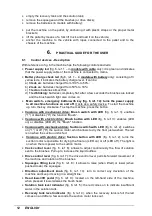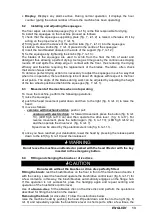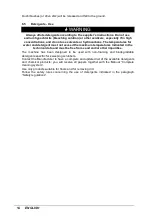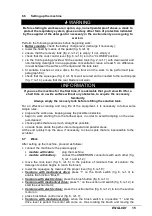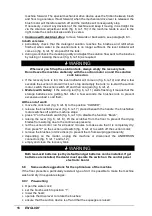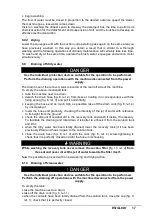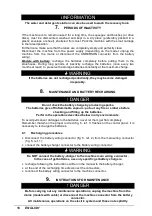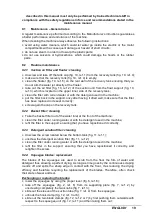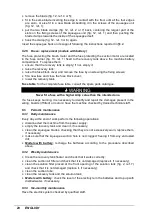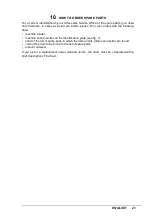
ENGLISH
6
•
head unit (fig. 2, ref. 4): the main element is represented by the brushes (fig. 2, ref. 5),
which distribute the detergent solution on the floor, removing dirt;
•
squeegee unit (or floor wiper, fig. 2, ref. 6): used to wipe and dry the floor, sucking up
the water spread on the floor;
•
head lift pedal (fig. 2, ref. 3): allows you to raise the brush head during transport.
3.3
Danger areas
A -Tank unit: in presence of certain detergents, danger of irritation for the eyes, skin,
mucous diaphragms, respiratory apparatus and asphyxia. Danger caused by dirt
recovered from the environment (germs and chemical subtances). Danger of crushing
between the recovery tank and solution tank, when the recovery tank is replaced on
the solution tank.
B -Control panel: danger of shortcircuits.
C -Bottom of washing head: danger caused by the brush rotation.
D -Rear wheels: danger of crushing between wheels and chassis.
E -Battery compartment (located within the solution tank): danger of short circuits
between the battery poles and presence of hydrogen during battery charging.
3.4
Accessories
•
Bristle brushes: used for washing delicate floors and for polishing;
•
Polipropilene brushes: used for normal floor washing;
•
Tynex brushes: used to remove accumulated stubborn dirt on resistant floors;
•
Drive discs: allow the use of the following discs:
∗
yellow discs: used for washing and polishing marble and similar
surfaces;
∗
green discs: used for washing of resistant floors;
∗
black discs: used for thorough washing of resistant floors with
stubborn dirt;
4.
INFORMATION ON SAFETY
4.1
Safety standards
Read the User's manual carefully before proceeding with start-up, use,
maintenance, routine maintenance or any other operations on the machine.
WARNING
Stick to all the instructions contained in this Manual (especially those regarding
danger and warning) and observe the safety plates attached on the machine.
The Manufacturer declines all responsibility for injures to persons or damage to
things deriving from the non-observance of these instructions.
The machine must be used by trained personnel only, who have shown their skill and
have been expressly authorized to use it.
Persons under eighteen cannot use the machine.
This machine must not be used for any other purpose than that for which it has been
expressly manufactured. Assess the type of building in which it will be used (e.g.
pharmaceutical and chemical companies, hospitals, etc.) and scrupulously respect the
regulations and conditions in force.


